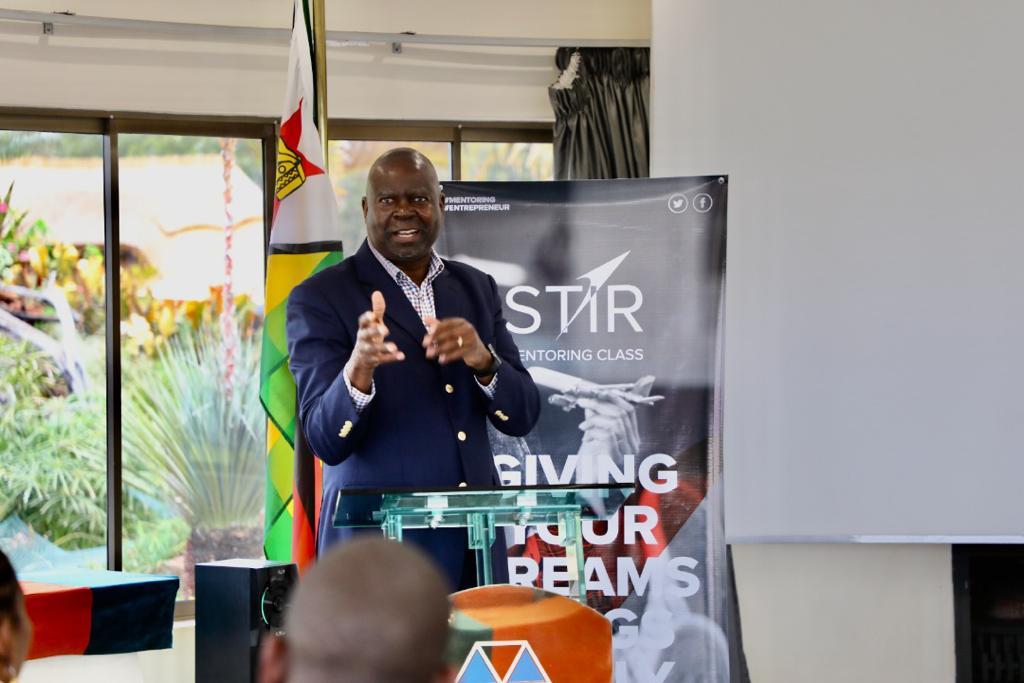
Kahiya: As a first time visitor to Zimbabwe, what is your broad perception of the banking sector here?
Chandra: I think I can answer that in two points: for instance, I think Zimbabwe for the last two years has gone through a trying time. It’s been tough and today you can see a lot of confidence coming back to the economy with an open currency regime. Now you can just see a lot more investment which is going to happen in this country. We have been here for 97 years, we have got 40 branches. We have got 76 automated teller machines. We have a unique arrangement with Visa whereby our ATMs can be used by any Visa card holder to withdraw cash.We are committed to SMEs, we are committed to the local business. It’s a very very important part of our work. To answer this question directly in terms of what my impression is, we are the fourth largest market capitalised entity in the country and when we look at our competitors … I would say that we are in a much better position to serve our customers. Two reasons: Number one; I would say we have been in the country longer and the second reason is the quality of people we have in Zimbabwe running our affairs.
Kahiya: Barclays Bank is a big player here but in the broader context, how do you place the bank in your region (emerging markets)?
Chandra: It is very important. It’s a key market for us and a very responsive market…very important. From a profitability perspective, it has been impacted by what has happened. From a risk perspective, we had to re-look at our risk paradigm in the country. But for our commitment to the country, nothing has changed and now we are gradually building up our assets and we keep investing in the country. There is time to grow. It is a very important market though.
Kahiya: The bank has been impacted but what do you need to do to rebuild in the short term?
Chandra: There are a couple of things. I think we have to start improving …I mean we should start lending more to the market and that is something we are committed to. Again when I say lending, I mean given the credit risk appetite that Barclays as a group has. We have got to be in a position to keep being the employer of choice. We have got to attract the best possible talent.
- Chamisa under fire over US$120K donation
- Mavhunga puts DeMbare into Chibuku quarterfinals
- Pension funds bet on Cabora Bassa oilfields
- Councils defy govt fire tender directive
Keep Reading
Kahiya: Talking about lending, it seems as if the bank has not been as aggressive as other financial institutions in the country.
Chandra: So the question is have you been slower than the competition?
Kahiya: What has been slowing you down?
Chandra: Very good question and a tough one. I don’t think again I’m going to go into the politics right now…I think whatever happened did not happen intentionally. When the global market dislocation was happening…we did become very cautious and the caution was not because of lack of commitment. But I think we were cautious to some extent because of the circumstances.Now we are in a position to open up the market and to the SME sector…We have diversified in manufacturing, agriculture, retail and tourism and we continue to increase our exposure. Maybe sometimes we are a bit too conservative but it’s not just about being conservative in Zimbabwe. Typically as a bank we have been conservative.
Kahiya: And that was going to be my next question, that in emerging markets coming out of a crisis like Zimbabwe where everyone is trying to be bullish, is it good to be conservative. How does it impact on the profile of your bank?
Chandra: So again, I will give you a global picture and then I come back to Zimbabwe. From a global perspective, if you look at the high street bank region, if you look across the banking industry in the world, we are the most profitable bank. We have made in the last nine months of the year 4,5 billion pounds profit before tax. Our income grew by 23% to close at 25 billion (pounds). In the first nine months, we made more revenue than the entire 2008. This is just what we declared in our interim results.Let’s get to Zimbabwe. We are committed, we are going to lend. George (Guvamatanga, Barclays Zimbabwe MD) has just had some limits approved and we will keep increasing. And today (Wednesday) we are going to have dinner with our customers. It’s all about telling them that we currently have approximately 90 000 retail and commercial customers and we are going to increase…90 000. And how much was it at the beginning of the year (interjection 11 000 people who had US dollar and foreign currency accounts).And if you think about it…we have five premier locations, we have two centres where commercial customers come…this area where commercial customers come is right in the middle of the industrial hub, so we are very committed in terms of growing business in Zimbabwe. There were times when we set back but never from the perspective of ‘Oh my God, we have got to leave the country’. No. This is a very important part for Barclays…I can say this on behalf of the CEO of the bank and I can say this on behalf of the chairman of the bank.
Kahiya: Looking at the capital adequacy ratio, it looks like you have a lot more reserves than what is required by Reserve Bank regulations. Why is there such a phenomenon? I know that it is good business to do that but the other issue is why have you not been lending? I’ve been talking to analysts who suspect that there is something you are preparing for?
Chandra: Nothing, nothing diabolical or sinister happening here. Nothing at all. First of all there is financial prudence, we would rather be well capitalised than undercapitalised, Second thing is that we are not a foreign bank, we are a local bank …And at the end of the day, we want to manage our asset to deposit ratio. Like I said, he (Guvamatanga) has got limits to lend more. You will see our asset-to-deposit ratio move to about 15% and we should be climbing those to 29 to 20% …If you go back and ask that question four months back, it would have been a single digit. From 7 to 40% that is a step in the right direction. We are not lending because we think there is something happening in the background? No, no, not at all. It’s just our credit exposure and that is really what it is.
Kahiya: How are you handling Zimbabwe’s high country risk?
Chandra: I think you answered part of the question (laughs). From a country-risk perspective, I think dollarisation has helped and there are fears at a macro level that we could come back to the Zimbabwe dollar again…But I think it’s a question of managing our exposure. We have doubled in country risk in some countries. We are extremely committed. I presented the Zimbabwe case to the CEO and everyone believed that at some point in time, it will become one of the jewels of Africa.
Kahiya: When would that happen?
Chandra: I would say it’s about international confidence coming back to the country.
Kahiya: Are you going to lead that?
Chandra: Indeed, indeed, you have to see the way we are talking about…I mean let me go into the two levels, one is South Sahara and one is Zimbabwe. We are the largest bank on this continent…70% of our revenue comes from emerging markets. And right now he (Guvamatanga) is trying to work on a model of trying to capture trade flow across Asia into Zimbabwe. He wants to pass a bit of the credit flow on the receiving side or payment side on whether lines of credit or foreign exchange…So we are part in the revival of Zimbabwe.
Kahiya: And lately… there is controversy around the indigenisation legislation. As a bank, what does it mean to you?
Chandra: At this stage it is premature for me to comment but I would make one comment…we are waiting for the details to come. At this stage we have not really given it much talk…If that is part of the rule of the country you are operating in…
Kahiya: Is there similar legislation in any of the countries you are operating in?
Chandra: Ah, not really…Only in South Africa which is a different entity because we operate under the banner of Absa. There is a certain amount of equity which needs to be…in black empowerment…Currently we are 67% owned by Barclays, 33% is local. But look at the end of the day we would want to have majority control. “I think in any country we need to have a mixture of local and international investors. We are listed in three Sub-Saharan countries which are Kenya, Botswana and Zimbabwe. Botswana has the smallest public shareholding, it should be 7,5-8%, Kenya is quite similar to Zimbabwe, a 70/30% mix.
Kahiya: Are you happy with your share price?
Chandra: If you look at our share price, it has probably been one of the longest performing shares in FTSE.
Kahiya: And locally?
(Guvamatanga interjects) It’s probably one of the strongest.
Kahiya: But do you feel that this is where it should be?
Guvamatanga: I think where it is now reflects the confidence on the market and how we are doing business and the direction we are moving in.
Chandra: And just look at our share price in the peak of the crisis…At the end of the day it is a very sound stock and I would recommend you to buy it.











